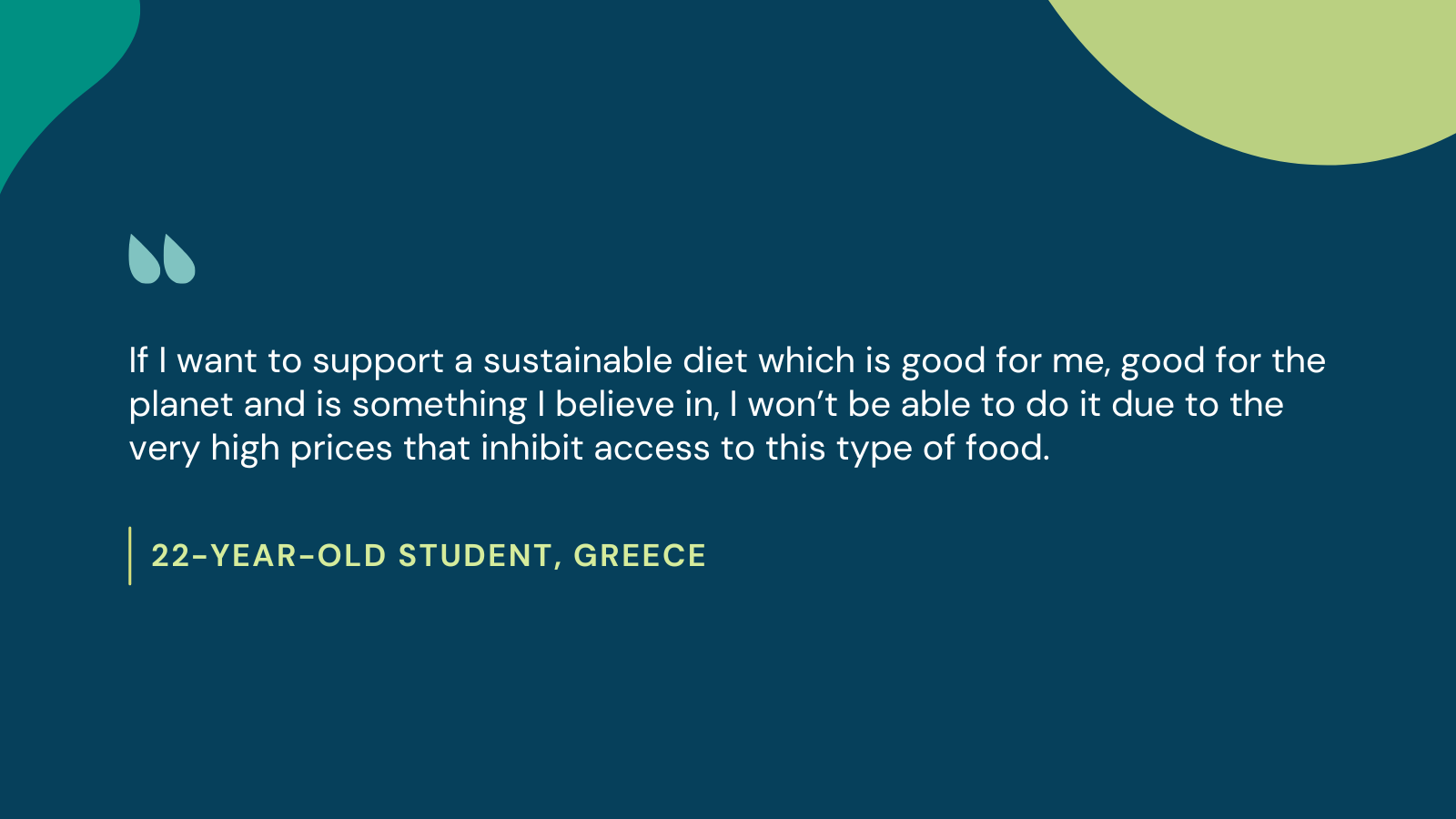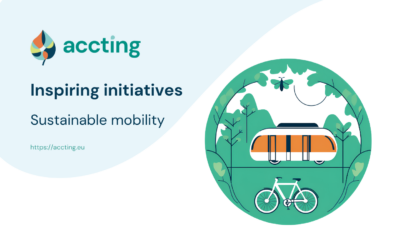The impact of climate change and the capacity to mitigate its negative impacts are unevenly distributed across and within societies; it is the poorer, marginalised and vulnerable groups who are the most acutely affected. ACCTING has collected 358 narratives via individual interviews in 13 European countries to capture some of the experiences of those vulnerable groups. These narratives on inequalities in enablers and hindrances for advancing behavioural change span eight thematic research lines – each addressing an EU Green Deal policy area. Read our dataset including all 358 narratives collected.
Veronica, an educator with two children, fights for a change of values
“My name is Veronica and I am an educator of almost 46 years old. I work in sustainable mobility and outdoor education. I have two children, one 15 years old and one 12 years old, who live half time with me and half time with their dad. Throughout my life, I have had different lifestyles.
I was born in a large city in central Italy and I come from a very peripheral neighbourhood (a working-class suburb), and until university, I took the bus and mostly the moped, because it was faster. Then I moved to this area and I stopped using the moped after a bad accident. I then started to use the bicycle and continued to do so when I moved to the centre of the city. At the time, I didn’t have the same conviction I have today. Even though I come from a very environmentally conscious family and years of scouting, I still thought the car was the quickest way of transport. When I moved back to the suburbs and the children were born it was difficult because I had to take them to kindergarten and there was no alternative for me. In the suburb where I lived, taking the bus with strollers and materials to transport was very difficult, so I was always in my car for an average of four hours a day. A very tiring life in which I was paralysed in traffic.
“I had a very local idea of travelling in the city and still believed that the car was the fastest way to get around”
Then I went to live in the Netherlands and Sweden and for nine years my life changed completely. I lived in cities where it was possible to choose different forms of sustainable transport and I gave up using my car. With COVID, I decided to return to my city in Italy because I saw the potential for change and I chose this neighbourhood again because there was a train stop and cycle path nearby.
I am a big believer in the 15-minute city and I try, as a freelancer, to concentrate my professional activities in the neighbourhood. All my work and my routine are very much intertwined with cycle activism. I always use the bike, but sometimes, given the infrastructure we have, in bad weather or when I am very tired, I move around either by metro or by train.
“I recognise that I am a different person today after living in Northern Europe”
I got a very light bike because that way I can load it onto public transport when I come back very late at night or to go on holiday. Train delays are frequent but they are getting better. The problem is that it’s difficult to load the bike because the train is always very full. In addition, I happened to find bus drivers who wouldn’t let me get on with my bike even though I was allowed to, or underground stops that are not equipped to carry bikes. Even though I know it is against the rules, sometimes I still take my bike on the escalator because otherwise I would have to get on or off three stops earlier or later. I also used car sharing through my work cooperative and I often use dedicated apps. When I am with the children, we only move around by bus or bicycle. I have always encouraged them to do so by showing them the concrete possibility of moving around in a sustainable way. The first child also moves around on his own, but to get to the bike path from home takes about 1 km and the road is very busy and I don’t trust drivers. Sometimes I feel my children are in danger in traffic: a feeling I didn’t have when I lived abroad, where I was even more in harmony with my children. But since we returned here, my oldest son has been complaining that it is difficult to use his bike in the city and asks to be driven by his grandparents. He has a heavier load of books and he doesn’t see many classmates with bikes around him. He is often ashamed when I take the cargo bike and sees my fight for the use of bicycles instead of more polluting vehicles as a demand.
“It’s not easy because as a mother I take the risk that something might happen to my son”
The problems that can occur on the road are potholes, glass puncturing inner tubes, risks related to the behaviour of motorists, and the fact that institutions do not take these risks on board: there is a lack of pedestrian crossings, traffic lights, 30 zones (areas where the speed limit is 30 kilometres per hour), signposting, road maintenance, etc. Even with regard to safety, the situation is tragic. There are areas without lighting where I don’t venture onto the cycle path: I’ve encountered wild boars and once a person threw a glass bottle at me at night as I was passing. My neighbourhood isn’t very quiet, but these problems don’t limit my cycling even at night. If I lived in another neighbourhood, I might have more problems. Moreover, here, compared to other Italian cities and European countries, people don’t feel they belong to a community of cyclists, and I feel as the alien, as everyone tells me. It’s dangerous and frustrating, and I know that you do take the risk even if I try to convince parents and children that it can be done.
I see the road as something that belongs to us, to cyclists, to pedestrians. The institutions and the local police don’t defend us enough or are very absent in our city on this, so we, the cyclists, have to do it by setting an example, by being seen physically and risking our lives. Then here also pedestrians are not used to cyclists on the cycle lane and think that you only cycle for fun and not to go to work, etc. So I often find myself having to stop and ring the bell and find reactions back from people saying ’It’s not just for you, cyclists. Where do we walk?” I even had to fight in my apartment building to be able to park my bike. In my neighbourhood, people mainly use the car alone, even for short distances out of fear of risks, laziness, and because there is an inability to reflect on the fact that the car is not the fastest or safest means of transport. It is comfortable but stressful and expensive, and we need to break this routine. Walking or cycling is not as attractive as having a new mobile phone. People think that buses are not well connected, they are late, they are dirty and there is a fear of COVID. The metro would change a lot, but it still doesn’t take you everywhere, and the change would still have to be in the values along with the improvement of the infrastructure. Here the car is a status symbol to get recognised, while using transport or the bicycle is seen as lame. There must be a commitment on the part of the municipality. For example, we demand the Bike to School service from institutions like the bus school. It’s a culture that needs to be changed, starting with working with children and the younger generation.”





